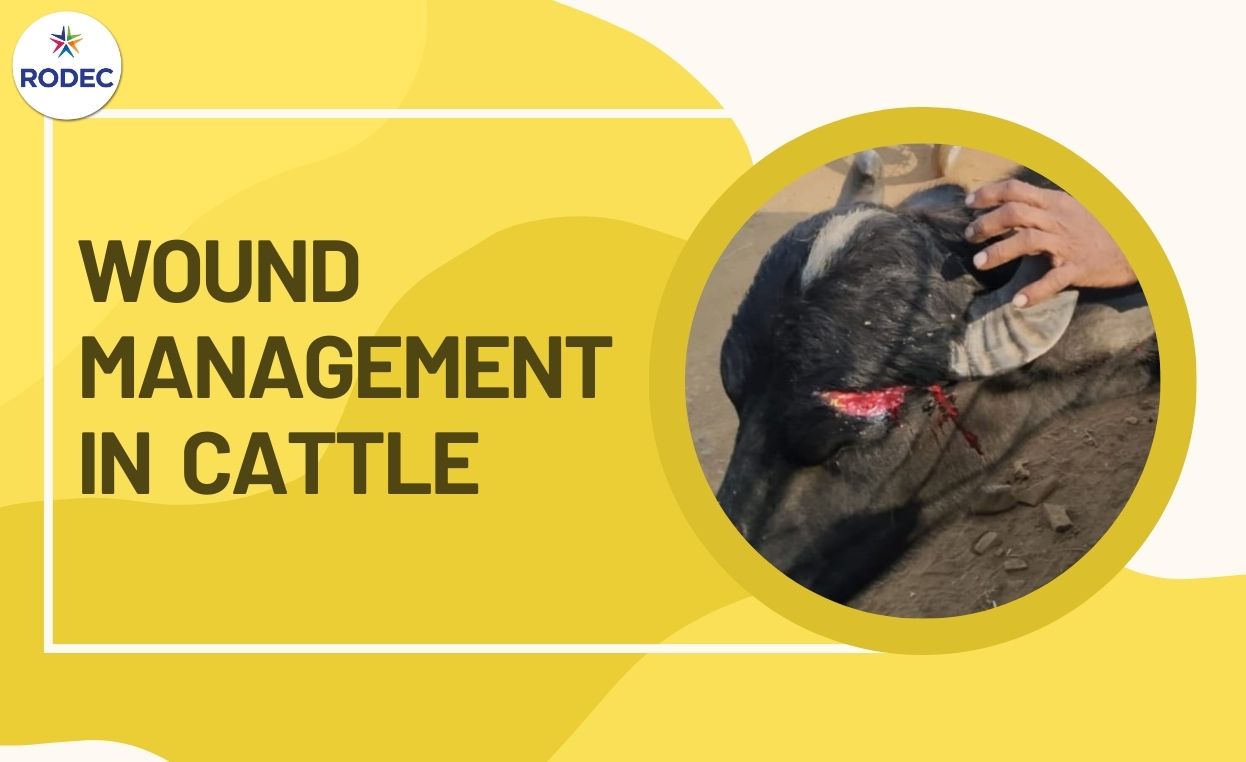
Blog |
September 18, 2024
What are wounds and how are they caused?
A wound is any disruption of or damage to living tissue, such as skin, mucous membranes, or organs. Wounds can either be the sudden result of direct trauma, or can develop slowly over time due to underlying disease processes.
Wounds in dairy animals can occur due to injury while fighting, animal /insect bites, injury due to barbed wire while grazing, accidents and blows or mishandling during milking. The problems associated with a wound arise due to an infection as toxins are released by the bacteria at the site leading to abscess, necrosis and slough etc.
Types of wounds in dairy animals
The types of wounds which commonly occur in dairy animals are: lacerated wounds, maggot wounds, burns, and dog bite wounds.
- Lacerated wounds: A laceration is a wound that is produced by the tearing of soft body tissue. This type of wound is often irregular and jagged. A laceration wound is often contaminated with bacteria and debris from whatever object caused the cut.
- Penetrating wounds: Penetrating trauma is an open wound injury that occurs when a long, pointed object pierces the skin and enters a tissue of the body, creating a deep but relatively narrow entry wound.
- Ulcerative wounds: Caused by necrotic tissue or debris sloughing off, and they don't show signs of healing.
- Abscesses: An abscess is a collection of pus surrounded by fibrous tissue that can occur anywhere in a cow's body where bacteria that form pus can multiply.
- Teat lacerations: Teat lacerations are traumatic injuries to the teats of dairy cattle that can be harmful for the cow's survival. They can be caused by a variety of factors, including: Barbed wire, Thorns, Animal bites, Untreated contused wounds, Chemicals, Insect bites, Environmental conditions, Milking machines. Teat lacerations can have serious consequences for dairy cows, leading to permanent loss of the udder for milking.
- Virulent wounds: Such wounds are caused by viruses and bacteria leading to pustules andvesicles.eg: Foot and Mouth disease.
How to prevent wounds in animals
- Provide enough space for each animal in the animal shed.
- House the pregnant cows and buffalos nearing parturition separately.
- Keep new born calves separately in case of a tightly packed animal house.
- Ensure the person responsible for milking gently handles the animal and properly washes hands before and after milking.
Care and management of wounds in Dairy Animals
Here are some tips for caring for wounds in dairy animals:
- Bleeding: If the animal is bleeding, put direct pressure to the wound with a clean, sterile cloth and tighten it. If the bleeding does not stop, try using ice cubes. If the injury is serious, consult a veterinarian.
- Irrigation: After the bleeding stops, clean the wound with a diluted disinfectant, saline solution, or water to eliminate debris, bacteria, and other germs. This also puts light pressure on the wound, which can help it recover.
- Bandaging: Depending on the wound, you can bandage it or suture it. If you do bandage the wound, make sure the bandages are clean and dry, and change them at least once a day. Bandages can stay on for 24 hours to several weeks, depending on the wound. If the bandage gets wet or smells, you should contact a veterinarian.
- Topical treatments: You can use Cureghav Spray to help the wound heal faster and keep it clean. Cureghav is highly effective in cases of Wound Myiasis (Maggoted wounds), Deep seated wound, broken horn wound, wound on thighs or legs, infected/ septic wounds, surgical wound, FMD, Degnala and foot rot etc.
Benefits of Cureghav - Cureghav helps in reducing pain and swelling, reduces chances of secondary bacterial infection and sepsis, helps to remove dead cells and prevents myiasis, prevents contamination, reform the skin epithelium and brings back the wound to normal texture.
- Other considerations: Keep the animal from licking, chewing, or scratching at the wound, sutures, bandages, or drains. You can also try using fly repellents if the wound is infested with flies.
Related product: Cureghav


